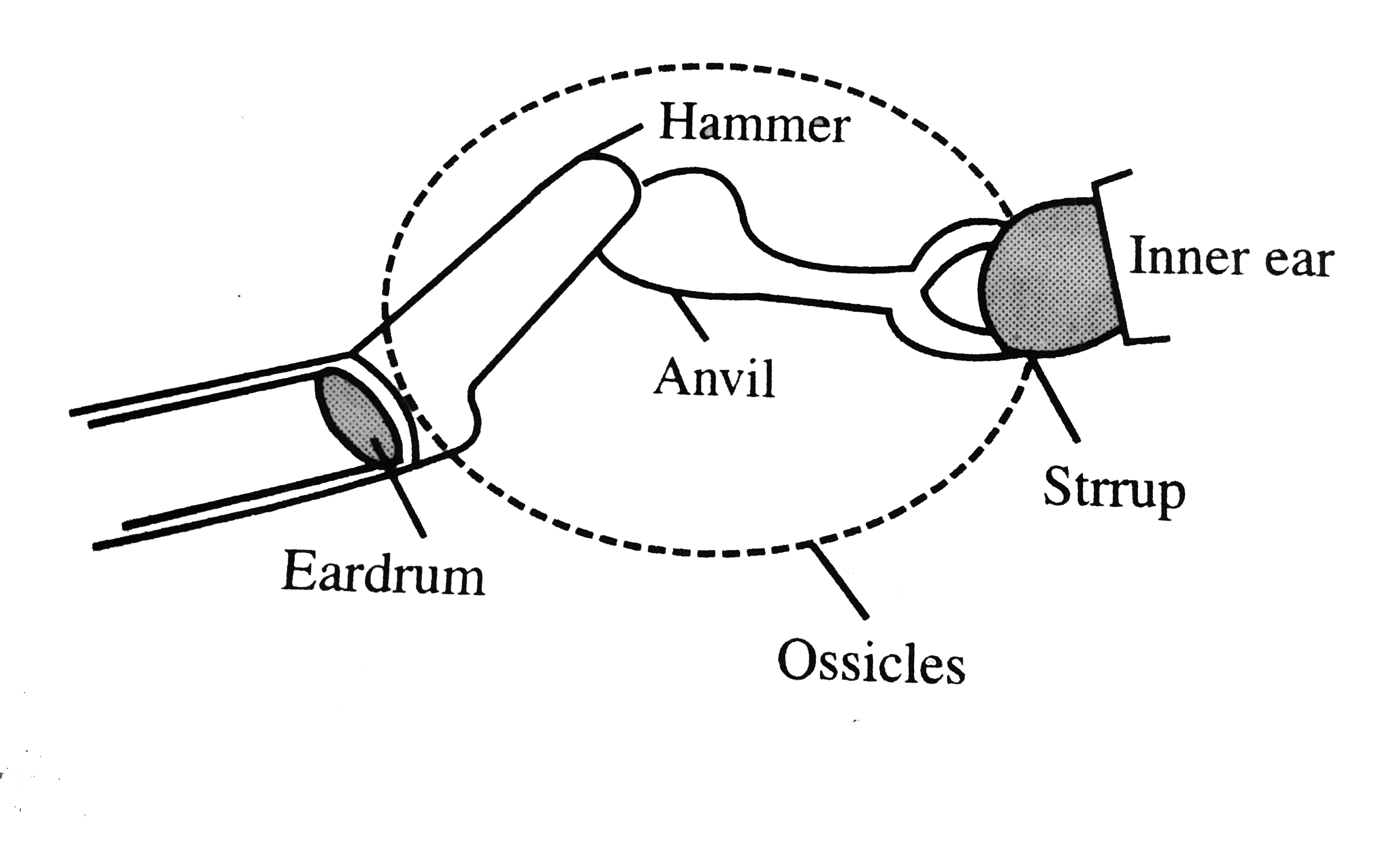Rewrite in a correct logical sequence :
Pinna, cochlea, tympanum, ear ossicles, auditory canal (route through which vibrations of sound enters the ear).
Pinna, auditory canal, tympanum, ossicles, cochlea
Topper's Solved these Questions
Similar Questions
Rewrite in a correct logical sequence :
Oval window. Tympanum, Cochlea, Auditory canal, Ear ossicles (path through which a vibration of sound is transferred in the human ear).
View SolutionCerumen or ear wax which coats the surface of auditory canal is produced by
View SolutionIdentify the correct sequence of organs/ regions in the organization of human ear as an auditory mechanoreceptor organ
View SolutionGiven below are sets of five terms each. Rewrite the terms in correct order in a logical sequence.
Example : Large intestine, Stomach, Mouth, Small intestine, Oesophagus.
Answer : Mouth → Oesophagus → Stomach → Small intestine → Large intestine.
Cochlea, Malleus, Pinna, Stapes, Incus.
View SolutionGiven below are some of the process which takes place in our ear when we are exposed to any sound. Arrange these in the correct order of sequence.
(a)The eardrum vibrates the transmits the sound wave to the ear ossicles.
(b) Vibration travel from oval window to the fluid of cochlea.
(c) Ripples in the basilar membrane band the hair cell against the tectorial membrane
(d) Generation of waves in the lymphs.
(e ) sound waves are collected
by the pinna.
(f) generation of nerve impulse and transmission through auditory nerves to the brain
View SolutionIdentify the correct sequence of organs/regions in the organization of human ear as an auditory mechanoreceptor organ.
(a) Pinna-Tympanic membrane -Auditorycanal-Cochlea-Malleus-Incus-Stapes-Auditory nerve
(b) Pinna-Malleus-Incus-Staeps -Auditorycanal-tympanic membrane-Cochles-auditory nerve
(c) Pinna-Auditory canal-Tympanic membrane-Malleus_incus-stapes-cochlea-auditory nerve
(d) Pinna-cochlea-tympanic membrane-auditory membrane-auditory canal-auditory nerve
View SolutionRead the following statements and find out the incorrect statements.
a. Anatomically, the ear can be divided into three major sections called the outer ear, the middle ear and the inner ear.
b. The outer ear consists of the pinna and external auditory meatus (canal).
c. The tympanic membrane (ear drum ) is composed of connective tissue covered with mucus membrane outside and with skin inside.
d. The ear ossicles reduces the efficiency of transmission of sound waves to the inner ear.
e. The pinna collects the vibrations in the air which produce sound.
View SolutionAmong the three ear ossicles. A receives the sound vibration from tympanum while B passes them to fenestra ovalis
View Solution
When a sound wave enters the ear, it sets the eardrum into oscillation, which in turn causes oscillation of 3 tiny bones in the middle ear called ossicles. This oscillation is finally transmitted to the fluid filled in inner portion of the ear termed as inner ear, the motion of the fluid disturbs hair cells within the inner ear which transmit nerve impulses to the brain with the information that a sound is present. The theree bones present in the middle ear are named as hammer, anvil and stirrup. Out of these the stirrup is the smallest one and this only connects the middle ear to inner ear as shown in the figure below. The area of stirrup and its extent of connection with the inner ear limits the sensitivity of the human ear consider a person's ear whose moving part of the eardrum has an area of about 50mm2 and the area of stirrup is about 5mm2. The mass of ossicles is negligible. As a result, force exerted by sound wave in air on eardum and ossicles is same as the force exerted by ossicles on the inner ear. Consider a sound wave having maximum pressure fluctuation of 4×10−2Pa from its normal equilibrium pressure value which is equal to 105Pa. Frequency of sound wave in air is 332ms. Velocity of sound wave in fluid (present in inner ear) is 1500ms. Bulk modulus of air is 1.42×105Pa. Bulk modulus of fluid is 2.18×109Pa.
Q. If the person is using an hearing aid, which increase the sound intensity level by 30 dB, then by what factor the intensity of given sound wave change as perceived by inner ear?
View Solution
When a sound wave enters the ear, it sets the eardrum into oscillation, which in turn causes oscillation of 3 tiny bones in the middle ear called ossicles. This oscillation is finally transmitted to the fluid filled in inner portion of the ear termed as inner ear, the motion of the fluid disturbs hair cells within the inner ear which transmit nerve impulses to the brain with the information that a sound is present. The theree bones present in the middle ear are named as hammer, anvil and stirrup. Out of these the stirrup is the smallest one and this only connects the middle ear to inner ear as shown in the figure below. The area of stirrup and its extent of connection with the inner ear limits the sensitivity of the human ear consider a person's ear whose moving part of the eardrum has an area of about 50mm2 and the area of stirrup is about 5mm2. The mass of ossicles is negligible. As a result, force exerted by sound wave in air on eardum and ossicles is same as the force exerted by ossicles on the inner ear. Consider a sound wave having maximum pressure fluctuation of 4×10−2Pa from its normal equilibrium pressure value which is equal to 105Pa. Frequency of sound wave in air is 332ms. Velocity of sound wave in fluid (present in inner ear) is 1500ms. Bulk modulus of air is 1.42×105Pa. Bulk modulus of fluid is 2.18×109Pa.
Q. Find the displacement amplitude of given sound wave in the fluid of inner ear.
View Solution
